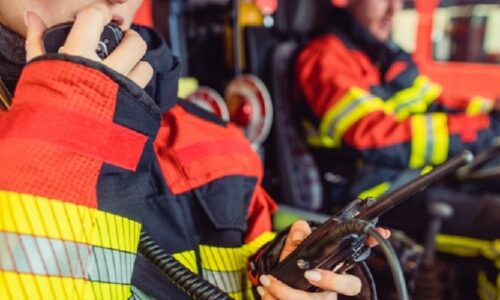
9.28.22 – SSI
Thanks to a code transition, fire alarm system contractors will eventually be the primary source for bi-directional amplifier systems. Here’s what they need to know.
This month’s column is being written in New Orleans, where I am attending the annual meeting of the National Association of State Fire Marshals.
One of the topics that is to be covered is Emergency Responder Communication Enhancement Systems, or ERCES. These systems are also referred to as bi-directional amplifier systems, or BDAs, and work with public safety radio systems.
Originally, they may have only been found within high-rise structures, but with changes to the model codes, they could be required in a building that is only 5,000 square feet in size. These systems were for a brief time found within NFPA 72, National Fire Alarm and Signaling Code, mainly within chapters 14 and 24.
This did lead to some confusion as to who was responsible for these systems, and whether or not they are part of the fire alarm system. This occurred with the 2013 edition of 72.
The requirements were removed from NFPA 72 and moved to NFPA 1221, Standard for the Installation, Maintenance, and Use of Emergency Services Communications Systems. From this Standard, a new Standard was developed which has recently been released by the NFPA Standards Council, NFPA 1225, Standard for Emergency Services Communications.
The purpose of these systems is to enhance the ability of a handheld radio to receive and transmit when inside of a building. In the past, this was through the use of firefighter phones. While these did work, they did restrict the movement of the firefighters who were operating within the fire ground and required that the command structure be within the fire command room. These phones were also rarely if at ever used by law enforcement or emergency medical personnel.
Requirements of these systems can now be found within the International Fire Code as promulgated by the International Code Council (ICC) and NFPA 1, Fire Code. Within the IFC, the requirements for these systems are located in Section 510. In NFPA 1, they can be found in Section 11.
At this time, the majority of these system are not being installed by fire alarm system contractors. Over time, there should be a migration in which a fire alarm system contractor would be the primary source for these systems. However, for this to occur, fire alarm contracting firms need to become knowledgeable in the design, installation, acceptance testing and yearly inspection and testing of these systems.
I cannot cover all of the requirements in this single column, so I will have at least one more on a number of specific requirements. For the remainder of this column I will cover some of the basics.
To begin, a site survey is required so as to verify if a system is even required to be installed within a particular structure. This requires information as to the frequencies that the emergency forces within a jurisdiction may be using. This can be VHF (150-174MHz), UHF (450-512MHz) or 700/800 bands.
Depending on the jurisdiction, the emergency forces may be more than just the fire department and the AHJ may not be the fire department. In some jurisdictions, the AHJ is law enforcement or the regional communications authority.
The site survey needs to be conducted by an individual who is licensed by the FCC. The license that is required is their General Radiotelephone Operators License (GROL). The survey typically uses a spectrum analyzer that is tuned to the various frequencies that a jurisdiction may be using.
It may be as simple as several control frequencies of a P25 network, or a multitude of frequencies across several bands. The reason for the survey is to determine if and where a BDA system may be required within a structure.
There may in the end be no requirement, a need for only a few floors or parts of floors, or for the entire building. Structures that are being built to LEED standards with energy efficient glazing may require the BDA system to be installed throughout, as this type of glazing has a negative effect to radio waves.
Once the survey has been completed, the design of the system must be completed. There are software packages that can perform the design based upon the readings that the site survey has provided. This software, however, is rather expensive, but over time the investment will pay for itself. Installation and testing follows, to which I will cover in another column.
One organization focused on these systems is the Safer Building Coalition (saferbuildings.org). They are very active in the advancement of codes and standards for these systems. UL is in this arena as well with the publication of UL 2524, Standard for In-building 2-Way Emergency Radio Communication Enhancement Systems.
UL is in the progress of the development of a certification program, in which installed system would be certified, similar to intrusion detection and fire alarm systems. NICET has also started a new certification program for designers and installers. At this time they have completed the Level I and II program. A Level III is soon to follow.
Contractors of fire alarm systems should begin to look at these systems, and to begin the process to become trained on the various design, installation and testing requirements. In the not-too-distant future, buildings that require fire alarm systems will require BDA systems as well. Next month’s column will go into the details a bit deeper than this introduction.
